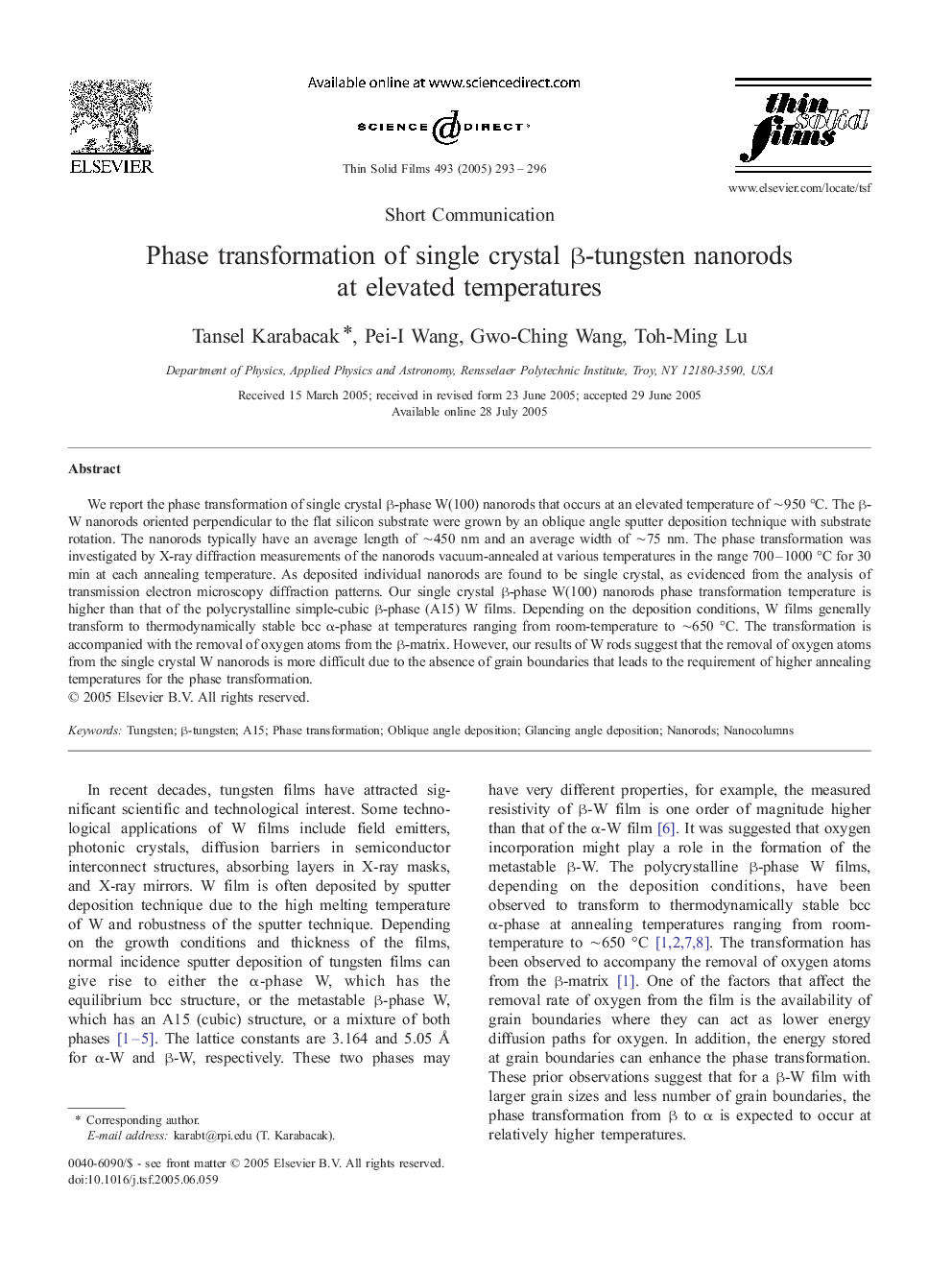| Article ID | Journal | Published Year | Pages | File Type |
|---|---|---|---|---|
| 9812098 | Thin Solid Films | 2005 | 4 Pages |
Abstract
We report the phase transformation of single crystal β-phase W(100) nanorods that occurs at an elevated temperature of â¼950 °C. The β-W nanorods oriented perpendicular to the flat silicon substrate were grown by an oblique angle sputter deposition technique with substrate rotation. The nanorods typically have an average length of â¼450 nm and an average width of â¼75 nm. The phase transformation was investigated by X-ray diffraction measurements of the nanorods vacuum-annealed at various temperatures in the range 700-1000 °C for 30 min at each annealing temperature. As deposited individual nanorods are found to be single crystal, as evidenced from the analysis of transmission electron microscopy diffraction patterns. Our single crystal β-phase W(100) nanorods phase transformation temperature is higher than that of the polycrystalline simple-cubic β-phase (A15) W films. Depending on the deposition conditions, W films generally transform to thermodynamically stable bcc α-phase at temperatures ranging from room-temperature to â¼650 °C. The transformation is accompanied with the removal of oxygen atoms from the β-matrix. However, our results of W rods suggest that the removal of oxygen atoms from the single crystal W nanorods is more difficult due to the absence of grain boundaries that leads to the requirement of higher annealing temperatures for the phase transformation.
Keywords
Related Topics
Physical Sciences and Engineering
Materials Science
Nanotechnology
Authors
Tansel Karabacak, Pei-I Wang, Gwo-Ching Wang, Toh-Ming Lu,
